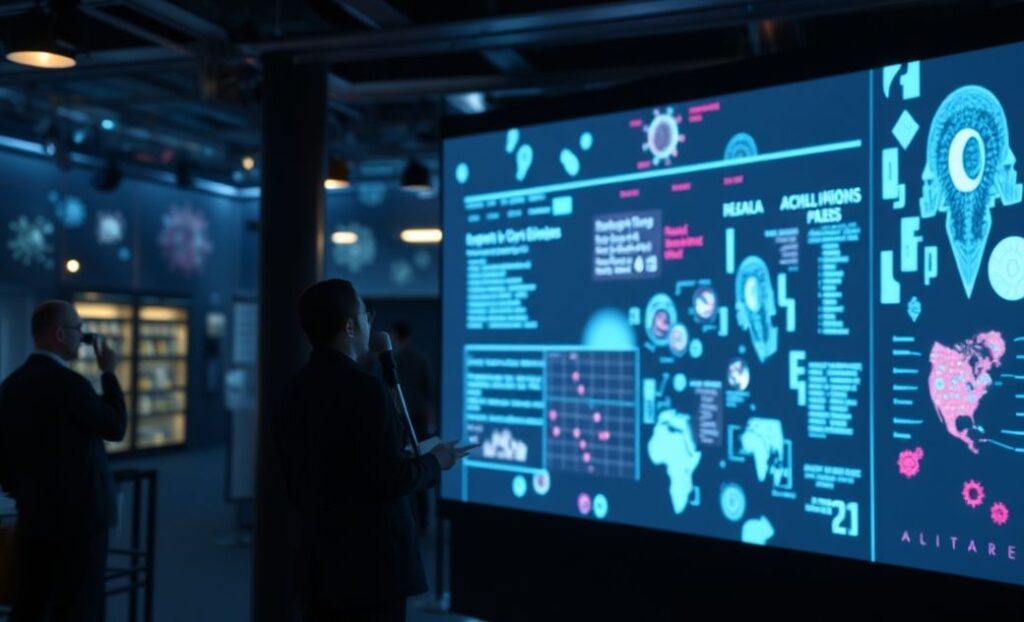The world has witnessed the profound impact of pandemics on global health, economies, and societies. In recent years, Artificial Intelligence (AI) has emerged as a powerful tool in predicting and mitigating the effects of future pandemics. Through advanced data analysis and computational power, AI is transforming how we prepare for and respond to health crises.
Using AI for Early Detection and Prediction
Pandemics often catch the world by surprise, spreading rapidly before adequate measures can be implemented. AI is revolutionizing early detection by analyzing vast amounts of data from various sources to predict and anticipate outbreaks.
Data Analysis for Predictive Modeling
AI systems can process and analyze massive datasets from health records, social media, and environmental sensors. By identifying patterns and anomalies, these systems can forecast potential outbreaks long before traditional methods recognize them. Machine learning models, for example, can classify viral genomes and predict mutation patterns, giving scientists a head start in understanding emerging threats.
Sentiment Analysis and Social Media
AI algorithms are increasingly used to perform sentiment analysis on social media platforms. By analyzing public discussions, AI can detect early signs of unusual health complaints or symptoms, signaling a concentrated outbreak. This real-time information can be vital for pinpointing new epicenters before they escalate.
AI in Response and Management
Once an outbreak occurs, AI’s role shifts from prediction to aiding in the effective management and response to the crisis. The ability of AI to handle complex data in real-time makes it indispensable in pandemic management.
Resource Optimization
AI applications can optimize the distribution of medical resources by predicting need patterns. These systems use historical data and current trends to anticipate resource shortages, ensuring that healthcare facilities are adequately equipped. This capability is crucial in limiting the overburdening of healthcare systems.
Remote Surveillance and Diagnostics
The advent of telemedicine and AI-driven diagnostic tools allows for remote monitoring and diagnosis, reducing the strain on healthcare facilities. AI algorithms can assess patient data remotely, offering diagnostic support even miles away from healthcare professionals. This not only improves care accessibility but also minimizes the risk of virus transmission.
Challenges and Ethical Considerations
While AI offers considerable promise, its application in pandemic prediction and management is not without challenges and ethical considerations.
Data Privacy Concerns
The collection and analysis of personal health data are critical components of AI’s predictive power. However, this raises significant privacy concerns. Ensuring data anonymity and securing consent are prerequisites to maintain public trust and compliance with privacy regulations.
Bias and Model Limitations
AI systems can sometimes inherit biases present in training datasets, leading to skewed predictions or recommendations. Ongoing refinement of these models, along with diverse data inputs, is essential to circumvent bias and improve accuracy.
The Future of AI in Pandemic Preparedness
As AI technology continues to evolve, its integration into public health strategies will become increasingly sophisticated. Collaboration between AI experts, epidemiologists, and public health officials is crucial in building robust AI-driven response systems that can withstand future pandemics.
AI’s potential to save lives and ease the global burden of pandemics is immense. However, it is imperative to approach its deployment with caution, ensuring ethical standards and transparency are upheld. By doing so, AI can genuinely serve as a formidable ally in the battle against future pandemics, transforming how society prepares and responds to global health threats.
